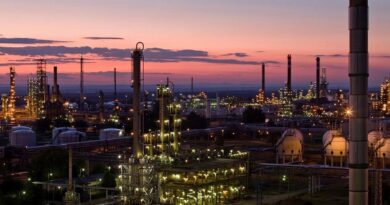PGM catalysts to accelerate transition to clean energy
Hydrogen – especially emissions-free green hydrogen – will be an important source of energy in achieving a carbon-neutral economy. The International Renewable Energy Agency (IRENA) expects the global capacity for electrolysers producing green hydrogen to increase from the 300 megawatts installed today to approximately 5,000 gigawatts of electrolyser capacity in 2050, which will enable sufficient green hydrogen to meet 12 per cent of total energy demand globally.
To ensure this happens, technological innovation and accelerated adoption are crucial to the development of a green hydrogen value chain that encompasses production, distribution and end-user markets, including hydrogen fuel cell applications.
In this regard, unless the hydrogen is produced directly at the point of use, storage and transportation are important considerations. While hydrogen has a higher energy mass (energy per kilogram) than conventional liquid fuels such as gasoline, it has a lower volumetric energy density, making it very light and therefore difficult to transport over long distances.
Today, the transportation and storage of hydrogen is mainly based on liquid compressed hydrogen, which has to be stored at either extremely high pressures (350-700 bar) or at extremely low temperatures (-253°C). The need for specialised handling and the insufficient infrastructure and refuelling networks for compressed hydrogen currently represent a constraint on the more widespread use of hydrogen, inhibiting the build out of refuelling networks and the wider deployment of hydrogen-based technologies such as emissions-free fuel cell electric vehicles (FCEVs).
To overcome this obstacle, innovative Liquid Organic Hydrogen Carrier (LOHC) technologies are being developed. LOHCs provide an effective alternative solution to existing storage and transportation methods by chemically bonding hydrogen to a stable organic liquid carrier, thereby eliminating the need for compression.
LOHCs absorb and release hydrogen through chemical reactions. When hydrogen is absorbed into the liquid organic carrier, a platinum group metal (PGM)-based hydrogenation catalyst is used. This liquid substance can then be stored and transported using existing fuel distribution networks and at ambient temperature and pressure.
Three enabling PGM-based technologies
LOHCs have the potential to unlock hydrogen as a globally-traded commodity, providing a safe, low cost means of bulk hydrogen storage and transportation.
For example, Hydrogenious, a leading LOHC developer which bases its proprietary technology on benzyl toluene as a carrier medium, has recently announced a joint study agreement with Uniper, the Abu Dhabi National Oil Company and Japan’s Energy for a New Era (JERA) to explore hydrogen transportation between the United Arab Emirates and Germany using Hydrogenious’ Liquid LOHC technology.
LOHCs are one of three enabling technologies for the advancement of a hydrogen value chain which are PGM-based. Platinum catalysts are a component of proton exchange membrane (PEM) electrolysers, one of the two leading electrolysis technologies available in the market for the production of green hydrogen. They are also used in hydrogen fuel cell applications, including FCEVs, a major driver of future platinum demand.
Depending upon the pace of FCEV adoption, it is estimated that, between 2033 and 2039, FCEV platinum demand could reach over 3 million ounces per annum, similar in size to the global demand for platinum in autocatalysts today.




